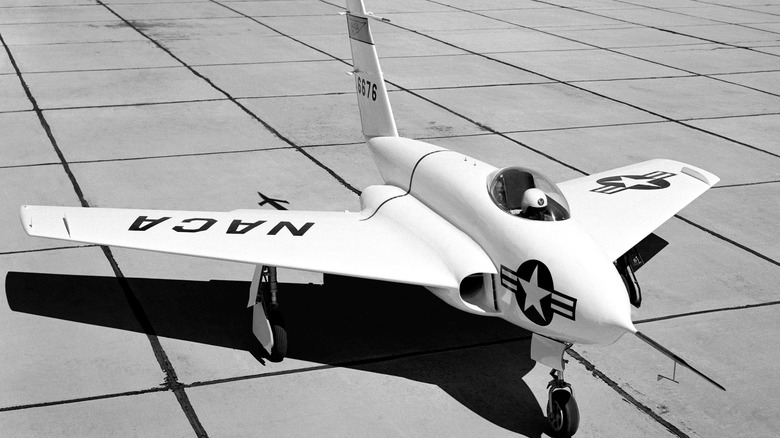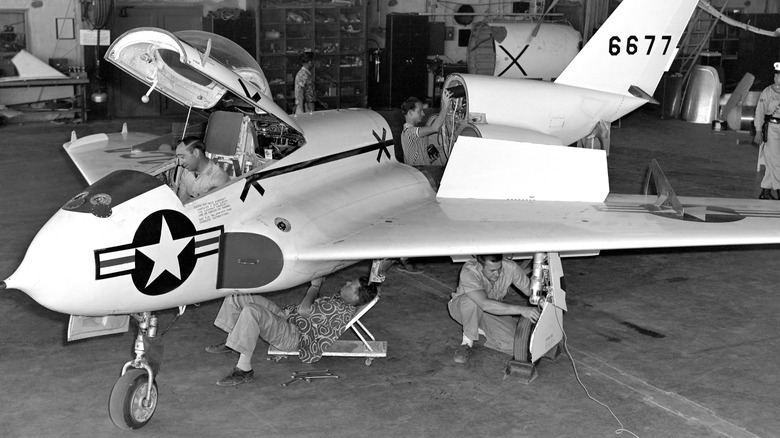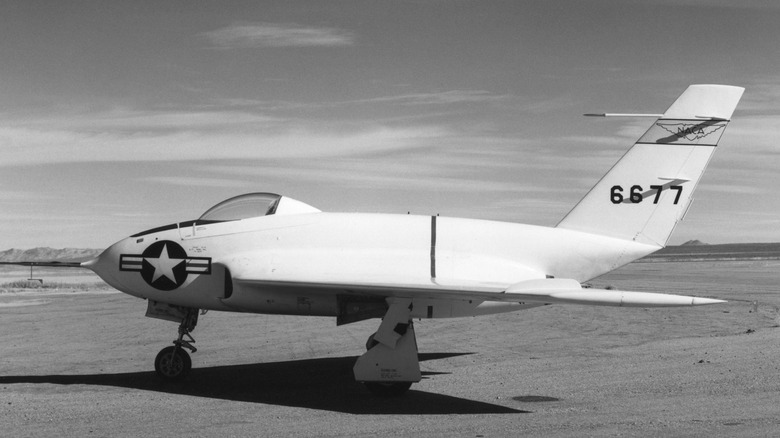X-4 Bantam: NASA's Futuristic Jet Designed To Explore Transonic Speeds
Nothing did more to accelerate the development of aviation in the 20th century than World War II. By the time the conflict was over in 1945, the fighters that first tangled five years previously were already being replaced by jets, and Nazi Germany's fearsome V2 rocket presaged the coming era of intercontinental ballistic missiles.
But despite major advances in aeronautics and rocketry, engineers still had much to learn about high-speed flight. Specifically, the so-called "sound barrier" (Mach 1) loomed large in the minds of designers and pilots alike. The dangers of the sound barrier were well-known: when airplanes approached the speed of sound, in the so-called "transonic" zone — pilots found they became hard to fly. Sometimes control could be regained, but often aircraft disintegrated in mid-air or plummeted to the ground, their controls locked. Some even considered the sound barrier to be exactly that — a hard obstacle beyond which powered flight was impossible.
As we now know, that wasn't the case. But making supersonic and transonic flight safe would take a lot of experimentation. It would also take a lot of guts on the part of the test pilots who were tasked with taking experimental aircraft right to the edge of what was possible. One such aircraft was the tiny, futuristic-looking Northrop X-4 "Bantam."
Northrop X-4 Bantam
The X-4 Bantam was developed by Northrop in the late 1940s for the National Advisory Committee for Aeronautics (NACA), the predecessor to NASA, to explore transonic flight. The swept-wing X-4 was a "semi-tailless" design devoid of a horizontal stabilizer. Traditional tail-mounted elevators were replaced by what Northrop called "elevons" on the wings, while the wing flaps doubled as speed brakes. With the X-4, NACA hoped to test whether a semi-tailless design might be the secret to stable, safe, high-speed flight.
Cosmetically, the X-4 was unusual but not unique. The technically innovative but utterly lethal rocket-powered Messerschmitt Me 163 lacked a horizontal stabilizer, as did the DeHaviland DH 108 "Swallow," an experimental British jet. Like the X-4, the DH 108 was designed to explore speeds approaching Mach 1, but tragically, in 1946, the second DH 108 prototype was destroyed on a test flight after structural failure at Mach 0.9 –- just shy of the dreaded "sound barrier."
The sound barrier was finally broken in 1947, and a year later, on December 15th, 1948, the X-4 flew for the first time. According to test pilot Scott Crossfield, NACA hoped that the X-4 would provide some answers about why the DH 108 had crashed, but the first prototype was regarded as so dangerous by pilots (including the legendary Chuck Yeager, who first broke the sound barrier) that it was quickly grounded. The second prototype proved more reliable and was successfully test-flown from 1950 to 1953 at what is now Edwards Air Force Base in California.
Northrop X-4 Bantam Test Flights and Legacy
The second prototype X-4 might have been more airworthy than the first, but it was still a challenging airplane to fly. Test pilots reported that increasingly severe pitch oscillation began to develop at high subsonic speeds, which they likened to driving over a washboard road. Never the most stable aircraft, as speed increased, the X-4 also became increasingly unstable in the yaw and roll axes, making early test flights a hair-raising experience. Various modifications improved the X-4's handling characteristics, and stable flight was eventually achieved at speeds up to Mach 0.94, before testing ended in September 1953.
In the end, the diminutive Northrop X-4 succeeded by failing. Test flights proved that with the technology of the time, semi-tailless swept-wing airplanes were unsuitable for speeds approaching Mach 1. It would take the development of advanced fly-by-wire systems for tailless and semi-tailless airplanes to become practical for high speed. Notable contemporary examples include the F-117A, the original stealth fighter, and the recently-unveiled B-21 "Raider." Like many modern high-performance planes, both are flyable only thanks to powerful computer-aided flight controls that would have been unimaginable in the 1950s.
Both X-4 prototypes survived. The original ended up at the Air Force Academy in Colorado Springs, Colorado, where its small size and weight reportedly made it the target of frequent "midnight mover" pranks. It has since been restored for display at the Air Force Flight Test Museum at Edwards Air Force Base. The second prototype is displayed at the Air Force Museum at Wright-Patterson Air Force Base in Ohio.


